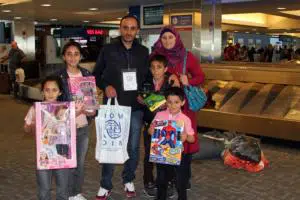People do not become refugees by choice. Refugees are children, women, and men forced to flee their homes on account of persecution, war, and violence. When refugees cannot return home nor integrate into the first country that provides them safety, they may be eligible for resettlement to a third country. Less than ½ of 1% of the world’s refugees will ever be resettled.
Refugees who are admitted to the United States for resettlement come through the United States Refugee Admissions Program, or USRAP. The USRAP is an interagency and public-private partnership; EMM is one of the ten national agencies that works in partnership with the U.S. government to resettle refugees.
Refugee Resettlement Program Resources and Data
- Steps of the U.S. Refugee Admissions Program
- Refugee Processing and Security Screening
- UNHCR History of Refugee Resettlement
- Immigration Can Reverse Rural Population Decline
- New HHS Study Finds Nearly $124 Billion Positive Fiscal Impact of Refugees and Asylees on the American Economy in a 15-Year Period
- Interactive map that shows where refugees have been resettled and their country of origin
- Episcopal Migration Ministries 2023 Annual Report
State-by-State Resources


“Do not forget to show hospitality to strangers, for by so doing some people have shown hospitality to angels without knowing it.”
– Hebrews 13:2
